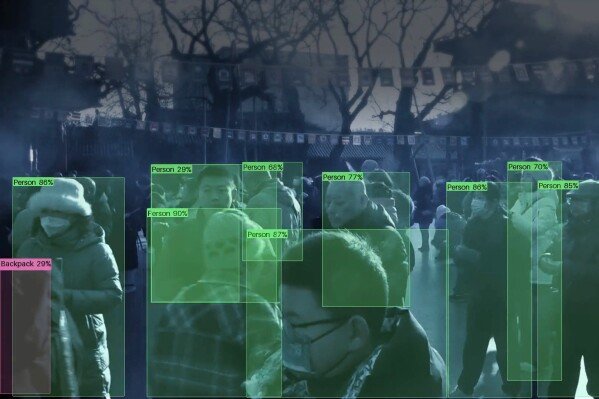
How China Turned American Technology Into a Digital Cage — And Why the U.S. Must Stay Alert
For years, researchers and rights advocates raised alarms about China’s rapid expansion of its surveillance state. Questions lingered: How much of that technology was homegrown, and how much was imported from abroad? American companies often denied involvement, insisting they did not know — and could not be held accountable — for how their products were used.
Now, a groundbreaking Associated Press investigation has revealed the truth: Chinese police and state-owned defense contractors partnered directly with U.S. tech firms — particularly IBM — to design and expand the surveillance systems that underpin Beijing’s authoritarian grip on its people. Not only were American companies aware, some even marketed their tools specifically as solutions for policing and citizen control.
This revelation should serve as a wake-up call for Americans. China’s digital police state is not just a distant concern in faraway provinces. It represents a blueprint for authoritarian control, fueled in part by American innovation, that could boomerang back into the global system, threatening values of freedom and privacy everywhere.
The AP investigation, led by Beijing-based reporter Dake Kang with freelance partners Yael Grauer and Myf Ma, began with a massive leak: internal emails and a database from Landasoft, a Chinese surveillance company. The documents showed in granular detail how foreign technology was embedded in China’s domestic security apparatus.
Over months, reporters sifted through tens of thousands of files. They verified procurement records, internal communications, and partnership contracts. Among the revelations were instances where U.S. companies had pitched products directly for law enforcement use, knowing full well they would be deployed in surveillance systems.
This wasn’t simply passive sales. It was active participation in building a system designed to monitor, track, and ultimately suppress the freedoms of Chinese citizens.
The AP team’s reporting extended far beyond documents. Journalists interviewed dozens of executives, engineers, and former officials across three continents. They secured classified Chinese government documents that confirmed American involvement from the very beginning. And they paid a price: after one interview in China, reporters were stopped by officials and taken to a government building for questioning.
The final product wasn’t just a text story. It was a multimedia package combining investigative reporting with visual storytelling: video animations, documentary interviews, and powerful images captured inside China’s surveillance-heavy cities. The presentation left no room for doubt — this was not speculation but hard, documented evidence of American technology enabling Beijing’s police state.
To understand the weight of this investigation, one must understand the scope of China’s surveillance system. What began as localized experiments has grown into the world’s most advanced digital control network.
AP’s reporting proves that American-made tools helped enable these systems. IBM, in particular, worked with Chinese police to develop advanced analytics platforms that became central to population monitoring. Other firms also had their fingerprints on the architecture.
At first glance, this might seem like an overseas issue: a foreign government using questionable methods to control its people. But the implications for the United States — and the democratic world at large — are profound.
China’s authoritarian approach isn’t limited to surveillance cameras. It extends into every sphere of society — and increasingly, into interactions with foreign individuals and companies.
When U.S. celebrities or athletes criticize aspects of Chinese policy, they are often forced into public apologies. When global companies acknowledge Taiwan as a country or express concern over Hong Kong, Beijing retaliates with boycotts and market restrictions until they recant.
The surveillance state is just one facet of the same system: a method of enforcing conformity, punishing dissent, and expanding influence. The difference here is that American technology helped build the very foundation of this control.
The AP’s revelations underscore the urgent need for vigilance. While the story avoids moralizing, the implications are clear: Americans must recognize the dangers of enabling China’s authoritarian reach.
The Associated Press investigation is more than an exposé of corporate partnerships. It is a warning flare. For years, Americans assumed China’s surveillance state was purely a domestic project, engineered and executed by Beijing alone. The reality is more troubling: American ingenuity was harnessed to build tools of control.
This is not a call for fear but for clarity. Americans must understand that the technologies they create can either defend liberty or dismantle it, depending on whose hands they end up in. China’s digital cage was not built overnight, and it will not remain confined within its borders.
The question now is whether Americans will take heed — and ensure that the next great innovation strengthens freedom rather than enabling repression.